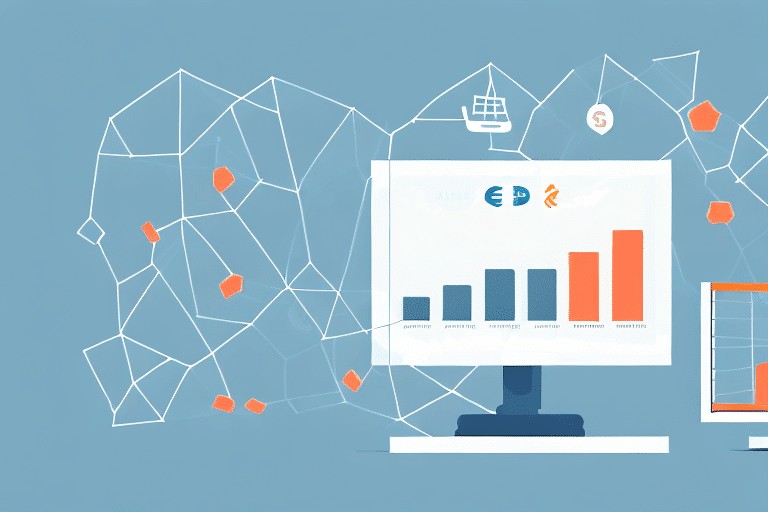The Role of Data Analytics in Scaling E-commerce Businesses
In today’s competitive digital landscape, e-commerce businesses must leverage every advantage to scale effectively. Data analytics stands out as a pivotal tool, enabling companies to understand customer behavior, optimize operations, and drive revenue growth. This comprehensive guide explores how data analytics can transform your e-commerce strategy and propel your business to new heights.
Leveraging Data Analytics for E-commerce Growth
Understanding Customer Behavior
Data analytics provides deep insights into customer preferences and purchasing patterns. By analyzing metrics such as browsing behavior, purchase history, and demographic information, businesses can tailor their offerings to meet specific customer needs. According to a Forbes report, companies that utilize customer data effectively see a 10-15% increase in sales.
Optimizing Inventory Management
Effective inventory management is crucial for avoiding stockouts and overstock situations. Data analytics helps businesses forecast demand accurately by analyzing sales trends and seasonal variations. This leads to better inventory planning and reduced holding costs. For instance, Investopedia highlights that predictive analytics can decrease inventory errors by up to 30%.
Enhancing the Customer Experience
Improving the customer journey is essential for retention and loyalty. Data analytics identifies pain points in the purchasing process, enabling businesses to streamline checkout procedures, offer personalized recommendations, and deploy targeted promotions. A study by Harvard Business Review found that companies with strong customer experience strategies have a 5-10% higher revenue growth rate.
Scaling Operations with Data-Driven Strategies
Supply Chain Optimization
Data analytics enhances supply chain efficiency by identifying bottlenecks and predicting potential disruptions. This proactive approach ensures timely deliveries and reduces operational costs. According to a report by McKinsey, businesses using advanced analytics in their supply chains can cut logistics costs by up to 15%.
Predicting Future Trends
Staying ahead of market trends is vital for sustained growth. Data analytics enables businesses to forecast future demands and adjust their strategies accordingly. By analyzing historical data and market conditions, companies can launch new products at optimal times. Bain & Company reports that predictive analytics can improve forecasting accuracy by 20-25%.
Enhancing Marketing Strategies
Targeted marketing campaigns are more effective and cost-efficient. Data analytics helps identify the most responsive customer segments and the channels that yield the highest ROI. Personalized marketing not only increases engagement but also boosts conversion rates. According to Statista, personalized marketing can lead to a 15% increase in sales.
Essential Data Analytics Tools for E-commerce
Google Analytics
Google Analytics remains a staple for tracking website performance and user behavior. Its comprehensive reporting features allow businesses to monitor traffic sources, user engagement, and conversion rates. Enhanced e-commerce tracking provides deeper insights into shopping behaviors and sales performance.
Adobe Analytics
Adobe Analytics offers advanced data analysis capabilities, including real-time data processing and customizable dashboards. It integrates seamlessly with other Adobe products, providing a unified view of customer interactions across various platforms.
Shopify Analytics
For businesses using Shopify, the built-in analytics tool offers valuable insights into store performance. It tracks sales trends, customer demographics, and marketing effectiveness, enabling merchants to make informed decisions. Visit Shopify Analytics for more information.
Implementing a Successful Data Analytics Strategy
Defining Clear Objectives
Start by identifying the key goals you aim to achieve with data analytics, such as increasing sales, improving customer retention, or optimizing supply chain operations. Clear objectives guide the selection of relevant metrics and analytics tools.
Selecting the Right Tools
Choose analytics tools that align with your business needs and technical capabilities. Consider factors like scalability, ease of integration, and the level of support provided. Tools like ShipScience can complement your analytics efforts by optimizing shipping processes.
Building a Skilled Team
A dedicated team of data analysts is essential for interpreting data and implementing insights. Invest in training and hiring professionals who can leverage data to drive strategic decisions.
Ensuring Data Quality
Accurate and up-to-date data is the foundation of effective analytics. Implement robust data governance practices to maintain data integrity and reliability.
Measuring Success with Key Metrics
Conversion Rate
Conversion rate measures the percentage of visitors who complete a desired action, such as making a purchase. Monitoring this metric helps assess the effectiveness of marketing campaigns and website usability.
Customer Lifetime Value (CLV)
CLV estimates the total revenue a business can expect from a single customer over their lifetime. A high CLV indicates strong customer loyalty and effective retention strategies.
Average Order Value (AOV)
AOV calculates the average amount spent by customers per transaction. Increasing AOV can significantly boost overall revenue without acquiring additional customers.
Return on Investment (ROI)
ROI measures the profitability of data analytics initiatives by comparing the gains against the costs. Tracking ROI ensures that your analytics investments are yielding positive results.
The Future of E-commerce Data Analytics
Artificial Intelligence and Machine Learning
AI and machine learning are revolutionizing data analytics by enabling more accurate predictions and automated decision-making. These technologies can uncover hidden patterns and provide actionable insights at unprecedented speeds.
Real-Time Analytics
Real-time data processing allows businesses to respond instantly to market changes and customer behaviors. This agility can enhance customer satisfaction and give businesses a competitive edge.
Enhanced Personalization
As data analytics becomes more sophisticated, personalized experiences will become the norm. Businesses will be able to tailor their offerings and interactions to individual customer preferences on a granular level.
Conclusion
Data analytics is indispensable for e-commerce businesses aiming to scale and thrive in a competitive market. By harnessing the power of data, companies can gain valuable insights into customer behavior, optimize operations, and implement effective marketing strategies. Investing in the right tools, building a skilled team, and continuously refining your analytics strategy will ensure sustained growth and success in the dynamic e-commerce landscape.




















